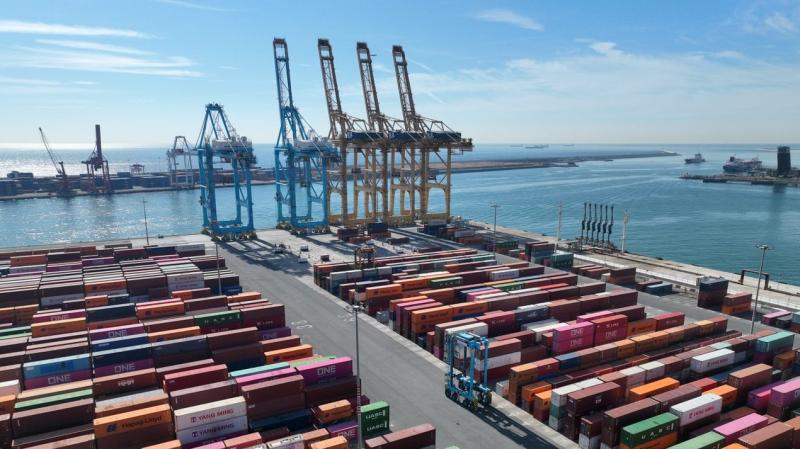
The Moves Proyectos Singulares II Program for aid to initiatives in electric mobility , promoted by the Government of Spain, has approved a grant of 3.9 million euros for APM Terminals Barcelona. The objective is to finance the pilot project for the electrification of the container handling equipment that operates in the terminal (straddle carriers). The straddle carriers are expected to arrive at the port of Barcelona during the third quarter of 2024 to carry out tests until the second quarter of 2025.
The initiative will include the acquisition of five electric straddle carriers, four recharging stations, civil and electrical works, an advanced computer network and the development of programs and processes necessary for the operation and recharging of the machinery. The implementation will make it possible to reduce approximately 821 tons of CO2 emissions per year, according to figures from the Maersk group’s port terminal manager.
“At APM Terminals, we are committed to reducing CO2 emissions and we are not going to spare any effort to meet our goals for 2030,” said the CEO of APM Terminals Spanish Gateways, Carlos Arias. Furthermore, he continued, “it is very important that this be done collaboratively with the governments of the countries where we operate”.
One aspect of the project at its Barcelona terminal that the company highlights is that the new electric straddle carriers will be completely zero emissions and the electricity used to charge them has come exclusively from renewable sources since 2018. The project at its Barcelona facility is part of a investment of 60 million dollars that APM Terminals is carrying out in pilot projects for the electrification of machinery in various terminals.


